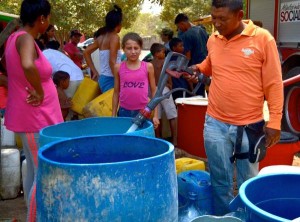By Gabriel Pilonieta-Blanco
El Tiempo Hispano
Learning about Carlitos’ case, son of Guatemalan Encarnación Bail Romero in Missouri, who was adopted by a couple while she was in jail, made us seriously think about the issue.
Encarnación was put in jail after a raid was carried out by the ICE in a chicken processing plant where she worked in 2007. She was charged with aggravated identity theft and sentenced to two years in prison when her son Carlos was 7 months and she never got to see him again.
The peculiarities of this case are more than a few, like for instance, Judge Daniel Jones approved the adoption papers based on the fact that the mother was not taking care of the child (she was in jail) without the mother’s approval for such a procedure.
According to a report from the Applied Research Center, “Shattered Families,” as of the summer of 2011 an estimated 5,100 children in 22 states were in foster care after their parents were either detained or deported. Immigration attorneys and children’s welfare advocates say a small but troubling number, like Carlos, have been put up for adoption with American families after their birth parents were stripped of their parental rights.
In Delaware, rumors about this situation have many people in the community worried, reason why El Tiempo Hispano had a conversation with Victoria Kelly, Director of the Division of Family Services of Delaware’s Department of Services for Children and Their Families.
Mrs. Kelly has only been in office 6 months, but has experience for over 30 years working with children in the public and private sector.
Kelly explained part of the process that the Division undertakes if an abuse against a child is detected.
First, the Division has a 24-hour helpline to receive reports about child abuse throughout the state. When a report comes in it is evaluated, and if it is accepted, because not all of them are, and if it complies with the legal standards, then an investigation takes place, and by the end of it, it can be determined if it is legally supported or not.
The second step is the treatment and counseling service for the parents. During this period the child remains at home and the idea is to give them support and to connect them with the Department’s services.
“Many times people think we investigate the cases just to take the children away from their homes, when the truth is that we do everything possible for the children to remain with their families and give the children the support needed so that they can be safe at home,” adds the Director.
When this cannot be done in a safe way, the children are sent to foster care, which is provided by the agency or by private organizations hired by the agency. The objective of sending a child to foster care is to achieve reunification, working with the family so that the child can return home as soon as possible and in a safe way.
“Eighty percent of children in foster care return home in less than two years,” says Kelly.
Those who cannot return home safely are sent to the adoption program, but all of the foster care and adoption processes are not done independently by the Division, but through the family court which is the entity directing each one of these steps.
“Many people think we take the children and that we make all of the decisions, but this is not so,” say Kelly. “When there is violence among the parents, the first thing we do is to refer them to domestic violence services hoping they can resolve their differences, and an investigation cannot be conducted. But if the fight is serious and the child is suffering or could have been hurt, an investigation is opened.”
This investigation comprises a conversation with both parents and the child, if he/she is old enough to talk about the situation, and also a conversation with “collateral people” (like for instance, the pediatrician or other professionals that know the family) to establish how is the child doing.
What happens with the families who do not speak English…
Finish reading Taking care of your Child: The question of how to protect the children of undocumented mothers





